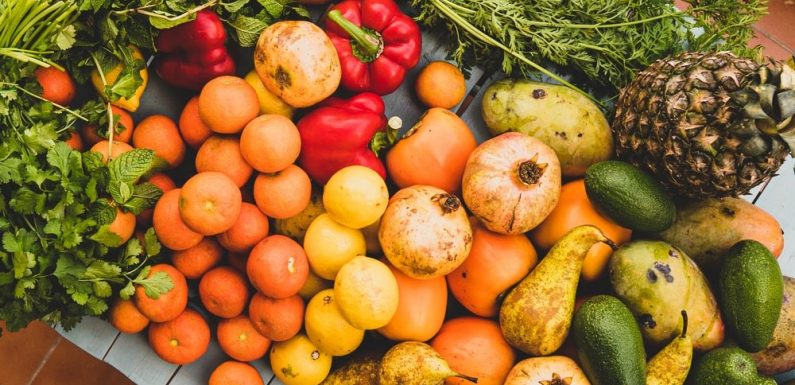
Gardening has become quite a skill that many want to try out. Apart from it being a relaxing and rewarding past time, gardeners save a lot of money and that they can eat fresh produce straight out of their own gardens. Not having to run to the shops for fresh strawberries or oranges is a great feeling.
As Gigi Lopez from livegrowgarden.com would say, “If you have a garden, you have everything you need” and we couldn’t agree more. Although the idea of having your own garden is quite intriguing, it comes as no surprise that actually growing a successful produce can be extremely tricky. Especially if you aren’t born with a natural green thumb.
If you are wondering how you can grow your own fruit, then follow our beginner’s guide for becoming an expert fruit gardener.
Choosing the Fruit
Fruit, especially those that grow on bigger trees, can be quite difficult to keep happy over a long time. It takes a lot of patience to wait for trees to bloom and to start bearing fruits. For that reason, it’s best to choose your choice of plants wisely.
If you are a beginner, then you shouldn’t start with plants that take a lot of effort to understand or that need a lot of pruning and nurturing. Start off with less temperamental fruits.
The best fruits to plant as a beginner are:
- Berries like raspberries, Goji, Honey, and blackberries. As long as they get enough sun and water, berries take care of themselves. They are deliciously sweet and might even invite a few cute birds into the garden
- Strawberries are seasonal, but once you’ve planted them, they will bloom year after year. Another bonus about strawberry plants is that they grow ‘runners’, this is a long stem that branches out of the main plant. It can grow a root and create additional baby strawberry plants
- Currants like white and blackcurrants grow easily and taste delicious in salads and jams. If you don’t have a lot of space you can opt for the red currant, also known as Rovada, which can be grown in smaller pots.
Apples are also a popular fruit to plant for beginners. Read this list of other fruits and veggies that is best to grow for beginners.
Preparing the Area
You might wonder whether the space you have available is enough to grow fruits in. Farmers who grow many fruits need large orchards, but this doesn’t mean you should have a big yard to plant large trees in. Fortunately, most fruits can grow anywhere where there is a sunny spot.
Smaller gardens also have enough space for sweet natural treats. You can either make small beddings or invest in above the ground planters. The beddings should be narrow, especially if you are planting strawberries, berries, and currants.
As long as your containers, pots, beddings, and planters are placed somewhere where there is sun, your plants will flourish. Many gardeners decide to mix veggies with different fruit plants. There’s nothing wrong with mixing and matching as long as you keep enough space in between the plants in order for them to get all the nutrients they need from the soil.
Smaller plants like strawberries can be planted in an 8-inch container whilst larger fruit trees like oranges and apples need a bigger pot that measures at least 48-inches.
The container should always have proper drainage to prevent it from drowning.
Preparing the Soil
The most important thing that soil should have is drainage and aeration. You can’t use container or sandpit soil to grow a luscious garden in. This is not only because they don’t have the proper nutrients, it’s also because they don’t allow proper drainage.
Before you start planting it is advised that you visit your nearest nursery or garden shop and obtain potting soil and compost. Soils should be moisture-controlled to allow for proper drainage when it’s being watered. Some potting soils are so advanced that it even obtains control-release fertilizer to ensure nutrients are released into the soil at short increments.
You can also consider adding other ingredients like pine bark, peat moss, or composted fir. These components work great with fruit trees. It’s also important that you consider the acidity levels of your soil. Depending on the plant’s needs you might need to adjust the levels within the soil.
The acidic levels can be adjusted by adding manure, compost, or peat moss as well as iron sulfate or sulfur. If you aren’t sure what the pH levels of your soil are, you can check it with a soil meter.
Read more about different preparation techniques used to grow soft fruits here: https://www.theguardian.com/lifeandstyle/gardening-blog/2017/jul/18/a-beginners-guide-to-growing-fruit.
Watering and Maintenance
If your soil is well prepared and you’ve given your new plant a decent pot to grow in that has access to loads of sunlight, you are only left with the maintenance. At first, you should water your new plant on a regular basis. Experts advise at least once in the morning and once in the afternoons – just enough to keep the soil moist. Make sure that you prune it and keep an eye out for any pest infestations.
You’ll might have to invest a lot of time and energy in the beginning of your gardening process, but after some time you’ll be able to enjoy the fruits of your labor – pun intended. Eating your own homegrown fruits or veggies is not only more nutritious and affordable, but it’s much more satisfying.


